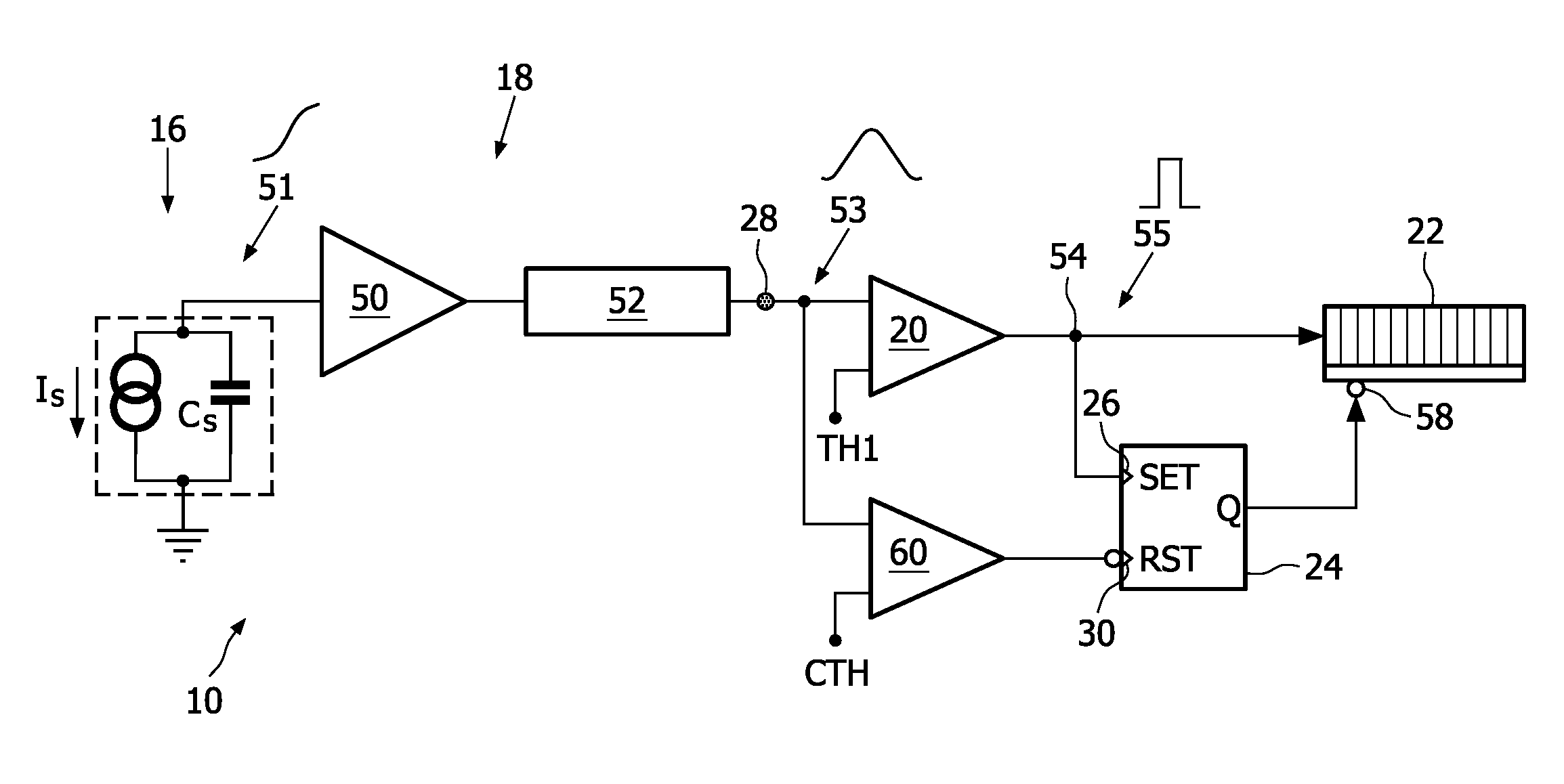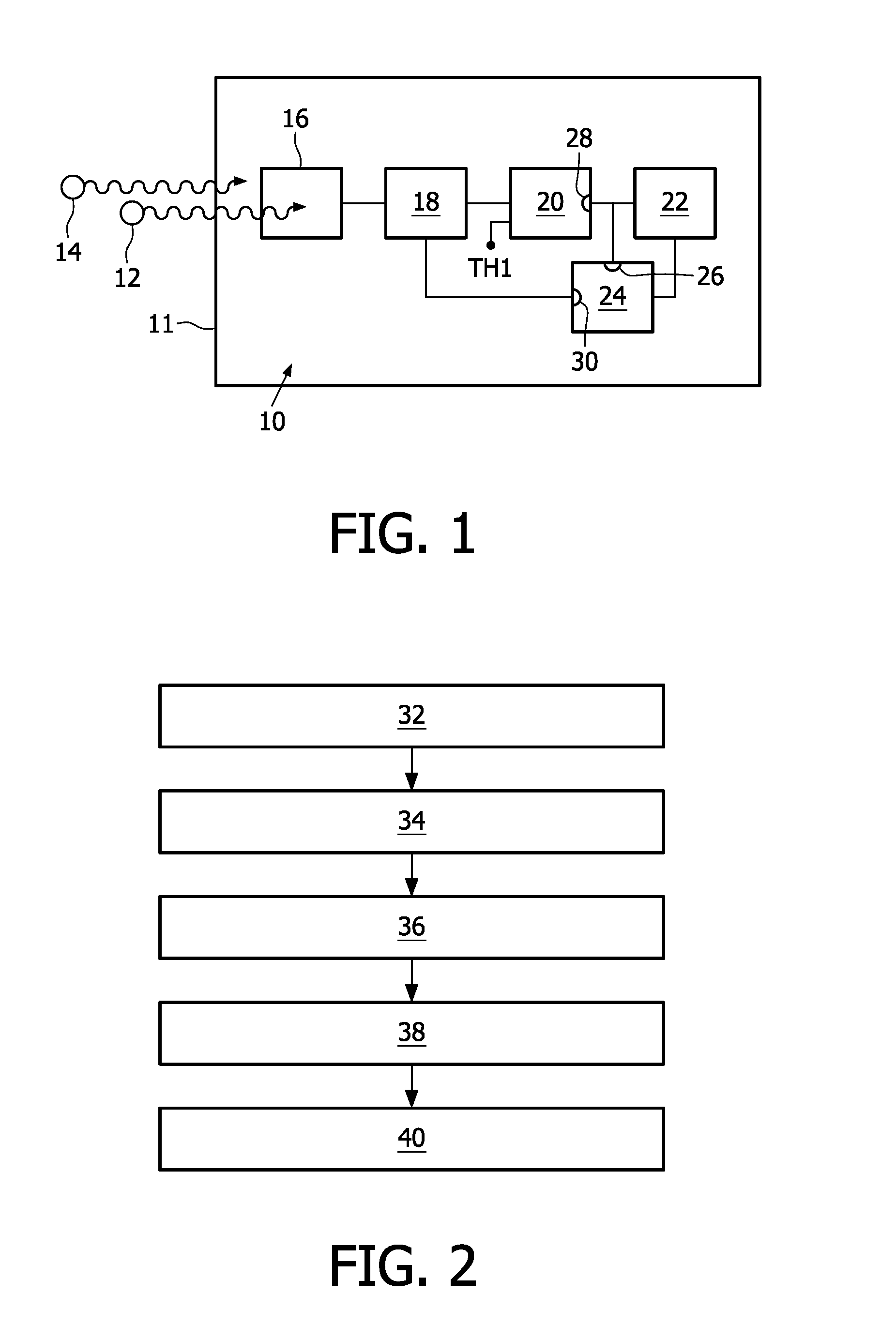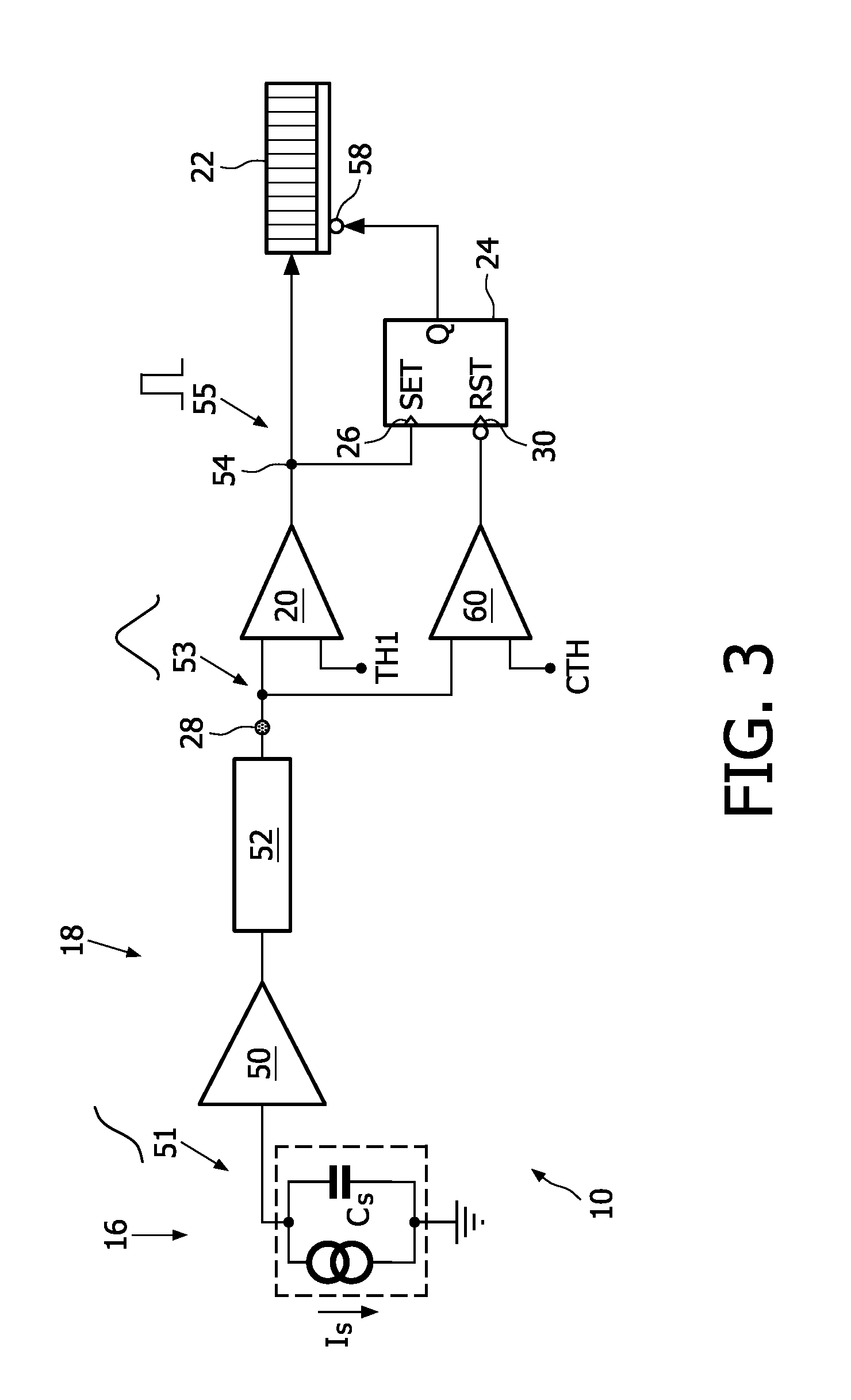Apparatus, imaging device and method for counting x-ray photons
an imaging device and counting method technology, applied in the direction of material analysis using wave/particle radiation, instruments, nuclear engineering, etc., can solve the problems of significant reduction of the energy resolution of the imaging device, affecting the counting performance, and only partially processing events/photons, etc., to achieve the effect of improving the counting performan
- Summary
- Abstract
- Description
- Claims
- Application Information
AI Technical Summary
Benefits of technology
Problems solved by technology
Method used
Image
Examples
first embodiment
[0077]FIG. 3 shows the apparatus 10 according to the present invention.
[0078]The sensor 16 is symbolized as a current source providing a current Is in parallel to a capacitance Cs The processing element 18 is implemented by a preamplifier 50, that receives a charge pulse 51 from the sensor 16, followed by a shaper 52. While the preamplifier 50 essentially acts as an integrator for the charge pulse 51 coming from the sensor 16, the shaper 52 provides an electrical pulse 53 having a rising flank and a falling flank. The output 28 of the processing element 18 corresponds in this case to an output of the shaper 52.
[0079]The first discriminator 20 is connected to the output 28 of a processing element 18, and an output 54 of the first discriminator 20 is connected to an input of the first counter 22.
[0080]The first gating element 24 is embodied as a flip-flop, having a set-input as the activation input 26 and a reset-input as the deactivation input 30.
[0081]The first gating element 24 fur...
second embodiment
[0092]FIG. 5 shows an apparatus 10 according to the present invention which employs multiple thresholds for discriminating the energy levels of the incoming photons 12, 14.
[0093]The shown apparatus 10 bases on the apparatus 10 according to FIG. 3, so that only the differences will be described in the following.
[0094]The apparatus 10 comprises a second discriminator 70 which is connected in parallel to the first discriminator 20. The second discriminator 70 is connected to a second counter 72 which is adapted to count events. Further, the second discriminator 70 is adapted to compare the electrical pulse 53 against a second threshold TH2 and to output an event if the second threshold TH2 is exceeded.
[0095]As indicated by a third discriminator 74 having a third threshold TH3, this concept can be extended to a plurality of discriminators and a plurality of counters. However, for clarity reasons, only the necessary basics regarding the introduction of the second discriminator 70 are exp...
third embodiment
[0099]FIG. 6 shows the apparatus 10 according to the present invention. It is similar to the embodiment shown in FIG. 5, however the concept of gating the second counter 72 is changed. While this difference is explained in more detail, reference is made to FIG. 5 for all other details.
[0100]As shown, a disable-input 58′ of the second counter 72 is connected to the output Q of the first gating element 24 via a delay element 90. This means, that a signal coming from the first gating element 24 disabling the first counter 22 is transmitted to the second counter 72 delayed by a certain time duration specified by the delay element 90.
[0101]While the delay element 90 is not mandatory, it is preferably used in order to avoid a situation, where the second counter 72 is disabled, due to the electrical pulse 53 exceeding the first threshold TH1, before the electrical pulse 53 has risen above the threshold TH2, thereby the second counter 72 missing a count.
PUM
 Login to View More
Login to View More Abstract
Description
Claims
Application Information
 Login to View More
Login to View More - R&D
- Intellectual Property
- Life Sciences
- Materials
- Tech Scout
- Unparalleled Data Quality
- Higher Quality Content
- 60% Fewer Hallucinations
Browse by: Latest US Patents, China's latest patents, Technical Efficacy Thesaurus, Application Domain, Technology Topic, Popular Technical Reports.
© 2025 PatSnap. All rights reserved.Legal|Privacy policy|Modern Slavery Act Transparency Statement|Sitemap|About US| Contact US: help@patsnap.com



